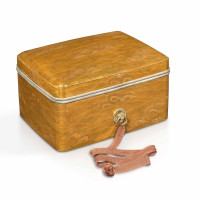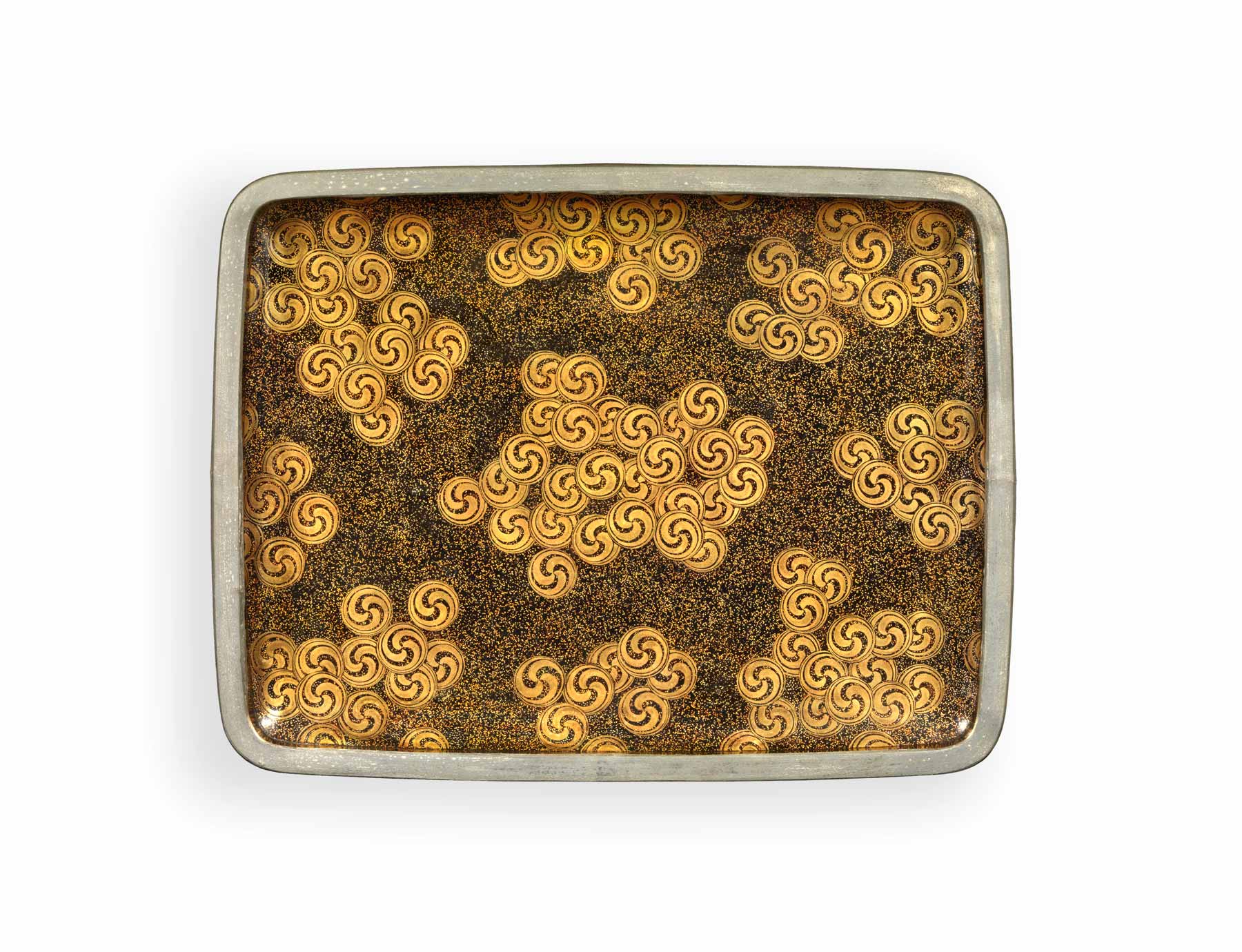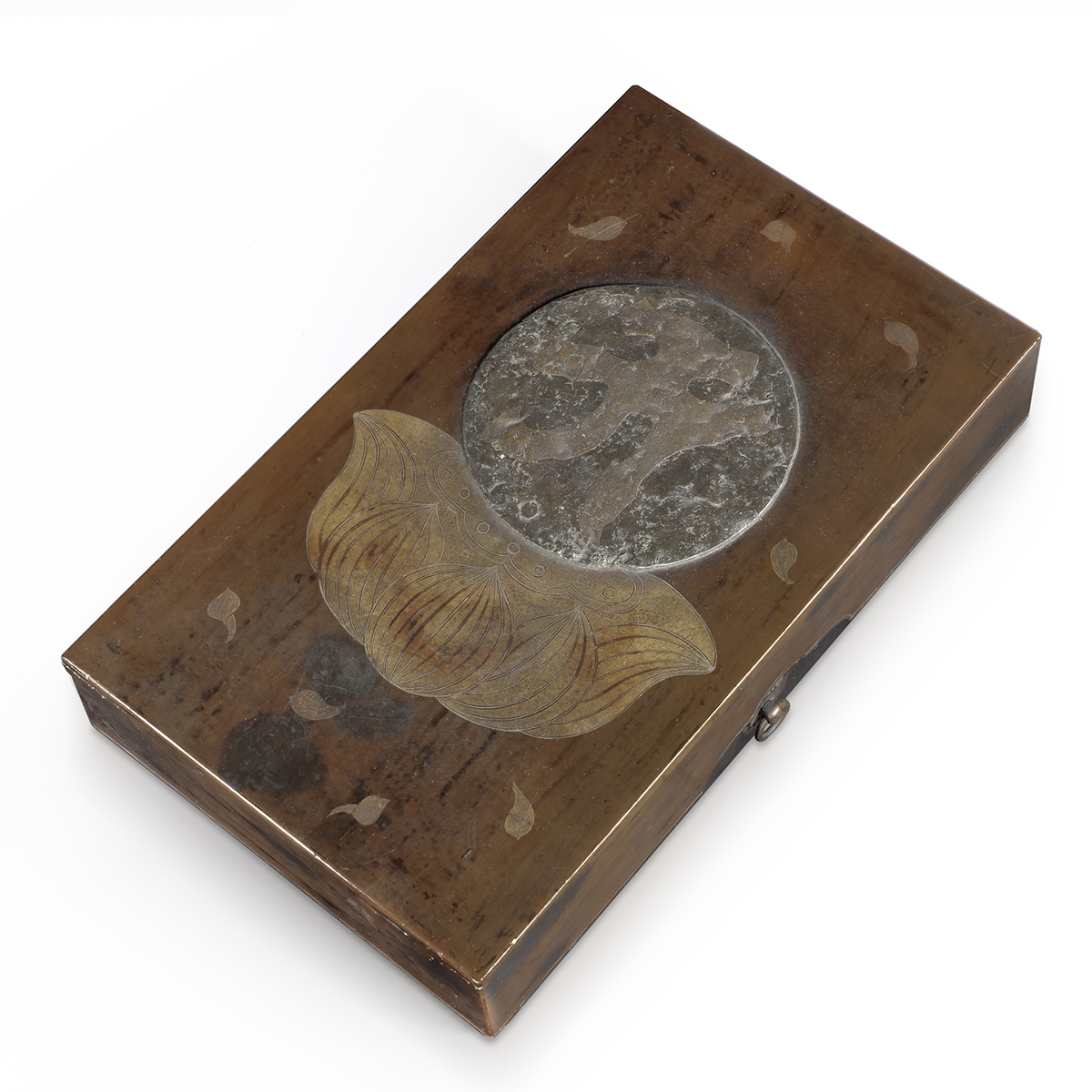Katawa Guruma Tebako
Lacquer


- Contact Us
-
Material
Wood, gold lacquer, mother-of-pearl, tin, silver
-
Size
L;28cm, W;36cm, H;20cm
-
Period
Edo-Meiji, 19th century
Description
Stationary box with design of “Katawa-guruma”
Katawa-guruma is one of the most of the most popular and very Japanese traditional design which presents a wheel of ox carriage for Heian era nobles. This oxcart is also called “Genji-guruma”. The design is depicting wheels which reveal a half part. It was wooden and soaked in the river to prevent from breaking because of drying in the Heian period. The landscape that they were soaked was beautiful with the waves so it became a popular design since.
This is a striking stationary box is made using the ikakeji raden technique, in which gold powder is densely sprinkled on a lacquered surface and delicately inlaid with cut-shell. Its cover and body fit snugly together, and their rims are trimmed in tin, and silver fittings in the shape of cart wheels are attached to the sides. The exterior is covered with a design of Katawa-guruma (soaking oxcart wheels in the flowing water) with technique of gold powder makie and mother-of-pearl works.
The artist is anonym, but most probably he copied the famous national treasure of Japan “Katawa- guruma Raden Tebako” of the Kamakura period. The design is exactly same, and even the size is almost same.
The provenance is the Arisgawa-no-miya Family, a royal family which existed since the beginning of the Edo to Taisho period.
Collecor’s box
Description of the box;
“Possessed by Arisugawa-no-miya Family” “Katawa-guruma tebako stationary box”


